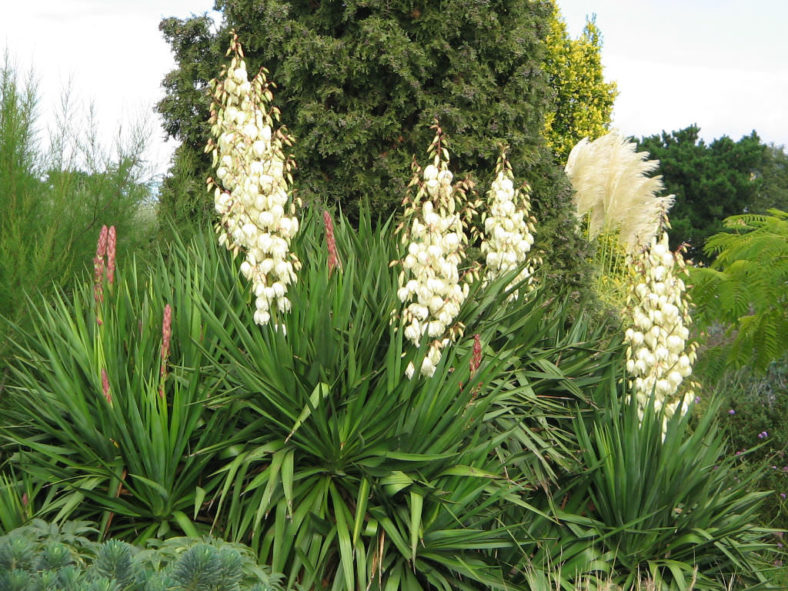Yuccas are desert plants native to the southwestern United States, Mexico, and Central America. They have also been naturalized throughout the southern United States. As far as houseplants go, they are probably eclipsed by the similar-looking Dracaena genus, which is often mistaken for Yucca. However, they are interesting slow-growing plants with the added benefit of being extremely drought tolerant.
If you kill a Yucca, it is probably due to overwatering. Over time, most species will grow into room-devouring monsters, but this takes long enough that they provide years of durable service as a houseplant. However, one word of caution: one of the popular species, Yucca aloifolia, has very sharp spines on its leaf tips that could potentially cause injury. Spineless species are much more suited for indoor cultivation.
Growing Conditions
Light: Yuccas thrive in full sun.
Water: They are highly sensitive to waterlogging. Water regularly in the growing season, spring and summer, but ensure the soil has good drainage and dries between waterings. Water sporadically in the winter. Never let a plant sit in a tray of water.
Temperature: Yuccas are adapted to the desert, where temperatures can soar to 90 °F (32 °C) or higher and go down to 30 °F (-1 °C) at night.
Soil: A loose, well-drained potting mix.
Fertilizer: Fertilize with liquid or controlled-release fertilizer during the growing season according to label instructions.

Propagation
The easiest way to propagate Yuccas is with offsets of older plants. Divide the plant during repotting, or carefully slice the offset away and pot it into a separate container. They can also be propagated by stem cuttings using pieces of the stem at least 4 inches (20 cm) long and rooting hormone. Yuccas grown indoors will likely not flower or bear seeds.
Repotting
Yuccas are relatively slow-growing plants that should only need to be repotted every other year. They do well, slightly pot-bound, as long as they do not become heavy enough to tip over their containers. Repotting larger plants can be difficult, so larger plants can be refreshed with new potting soil by digging out the container's top 2 inches (5 cm) and adding new soil. Remove the Yucca plant from its container during typical repotting and go up one size. Always use fresh potting soil.
Grower's Tips
Under the right conditions, Yuccas are not difficult plants to grow. They tend to thrive on a little neglect rather than too much attention. Yuccas are especially easy to overwater, and soggy stems indicate too much water. The best conditions for Yuccas include a sunny corner with relatively low humidity. Although scale can be an issue, they are not prone to many pests. Over time, plants will typically lose their lower leaves, giving them a pleasant "tree-like" appearance. In nature, the leaves droop, forming a skirt around the trunk.
Source: about.com
Links
- Back to genus Yucca
- Succupedia: Browse succulents by Scientific Name, Common Name, Genus, Family, USDA Hardiness Zone, Origin, or cacti by Genus